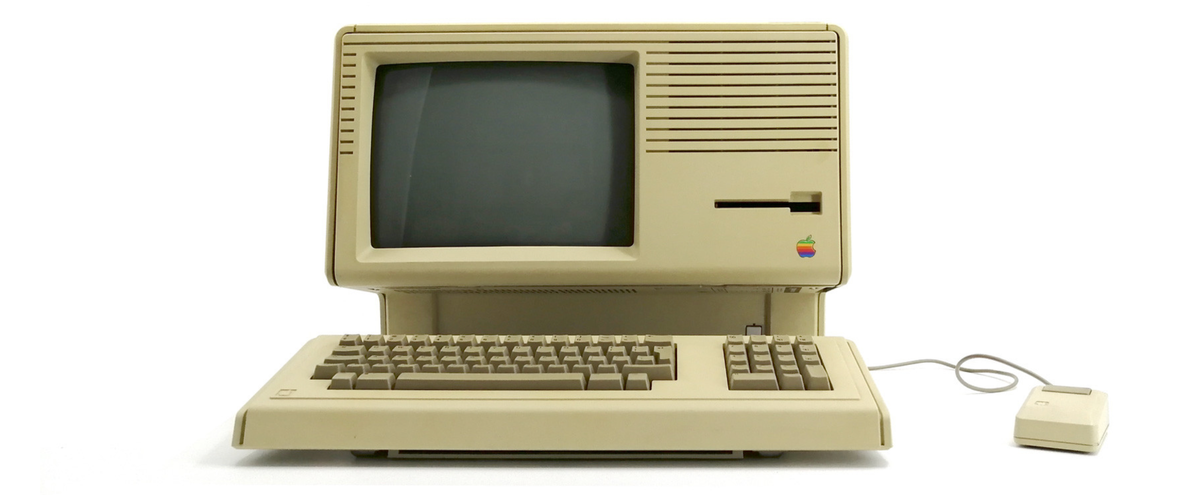The Lisa is 40 years old, and we still misread it as a failure

You probably heard many stories about Apple's Lisa historical flop. Launched in January 1983 at a 5x to 7x price point above the best-selling IBM PCs of the time, Lisa was discontinued in 1986 (its remaining inventory was famously buried in a Utah landfill to justify a tax write-off). The stories and analyses about this epic failure go on and on. How Steve Jobs stole all the best ideas from Xerox PARC; how Apple spectacularly failed to leapfrog the Apple II with this overpriced product; how a second team had to secretly design the Macintosh (essentially a cheaper version of Lisa); etc.
Let's revisit the mythical story's bullet points and try to interpret them in terms of innovation strategy properly...
- Apple stole Xerox PARC ideas
Yes, they did. Or, more precisely, they stole Xerox's vision and then duplicated the technology. The Xerox Star 8010 was actually launched in 1981 (two years before the Lisa) and tried to compete with high-end Apollo and Sun workstations. And, although Apple delivered a sub-par version of the Xerox Start 8010 years later and then failed for another few years to get to a coherent market offer, Xerox never managed to get their vision to the market.
I was running clinic calls last week with a few biotech and MedTech startups, and I'm still appalled that this hard reality is barely understood by most scientists launching startups. The sad cliché of the CTO closed in her lab working on science for a few years while a hired-gun CEO ineffectively tries to build a business is still very much alive in 2023.
The lesson here is that your ideas, as well as your technology, are only worth what you do with them. It's rarely (if ever) the best technology that wins big, but the one capable of offering an effective value add to a first market.
- The Lisa was overpriced
The Lisa was launched just below the psychological $10,000 price point (a tad more than $30,000 in today's money), while command-line IBM PCs were sold at a 'measly' $1,500 (~$4,500 in 2023). Was it overpriced, though? Not really. The Lisa wasn't competing so much with IBM PCs in the enterprise market but rather with high-end workstations in science labs and R&D centers. In this market, computers were sold in a $15,000 to $30,000 price range (~$45,000 to $90,000 in 2023). Apple's mistake at the time was to jump the gun and indeed try to market the Lisa to the SME market, while they should have entered 'from above,' disrupting first high-end applications by delivering the same value 30-50% cheaper.
Remember in 2019, when Apple launched its "overpriced" 6K Pro Display XDR monitor at a whopping $5,000 to $6,000 (without stand)? Well, you're not the market. The market is professional studios that are still currently buying $20,000 to $35,000 perfectly color-graded monitors (oftentimes at only 4K resolution)... Same story, but this time Apple got the target right.
The lesson here is that the price/product discussion is always misleading. What really matters is focusing on the value/price combination. The product is only the consequence of the business model.
- The Lisa technology wasn't ready
It's true that the technical ambitions of the Lisa were way ahead of 1983 hardware capabilities in terms of RAM, processor power, and storage. Nothing was ready for the elegant GUI-based and mouse-driven groundbreaking interface or the object-oriented development paradigm... So what? The Lisa was still delivering an effective glimpse into the future, albeit sluggish. This didn't stop Apple from being an immense success with an initial very sluggish first version of the iPhone or the Apple Watch. What happened is that Moore's law always catches up, and if your first offer is a bit contained by current technology capabilities today, next year, or the year after, this bottleneck will be lifted. The real question is: is it worth launching too soon or too late?
The lesson is that if you are on a fast enough technology cycle, it's worth launching as soon as possible a product that can only deliver part of its value as the technology is still maturing (read: computers OK, but nuclear fission is a no-no). While you launch early, you still get to connect with innovators and early adopters in your market. You build your brand presence but, most importantly, learn from this early market and better understand how to cross the chasm to the early core market.
You need to understand that your V1 is incomplete and that you need to iterate and catch up fast on the V2.
- The Macintosh cannibalized the Lisa
The full story of the Lisa failure was that eventually, Apple decided to build the Macintosh, a cheaper and more effective Lisa that would meet the market at a proper price point.
In reality, we don't know if the Lisa would have eventually succeeded because Steve Jobs was booted from his role at Apple. He was put on the side-line by internal politics in 1982. But Jobs discovered that Jef Raskin had started a side project: the untold story of the Macintosh was that it was not a cheaper Lisa but a competing vision. While both were GUI-based, the Lisa was an application-centric (object-oriented) computer, and the Macintosh was document-centric. Jobs essentially hijacked the Mac project, got his way in the background, letting Lisa fail and coming with a vengeance. This whole story is more about corporate drama and politics than innovation strategy, really. In practice, both Macintosh and Lisa projects made their own sense. Different markets, technical visions, a common GUI layer, and (mostly never mentioned) tons of exchanges and collaboration between both projects (Lisa Toolkit would birth the MacApp frameworks; printing, Postscript, and WYSIWYG technologies were at the center of both projects, etc.).
Despite the corporate troubles of Apple at the time, the lesson is that innovation ("changing the market") is always less risky when you come at it from different angles. Having competing projects run simultaneously, with teams still producing a portfolio of common technologies, is a tremendously effective best practice. Lisa failed, and the Mac took over; so what? Apple did win in any case, while Xerox lost it all with its narrow market perspective. The keyword? Optionality.



